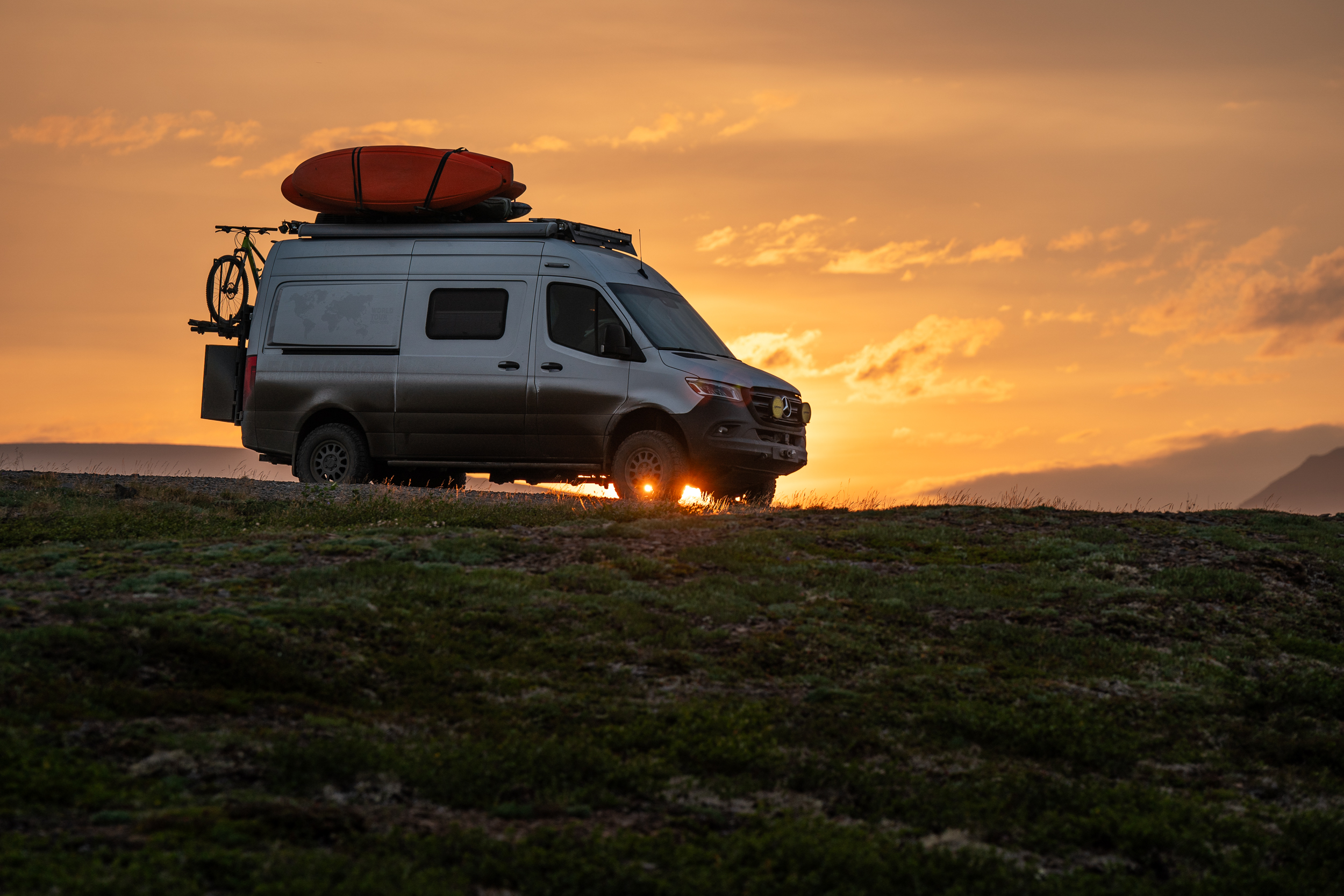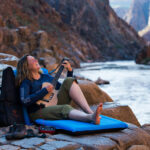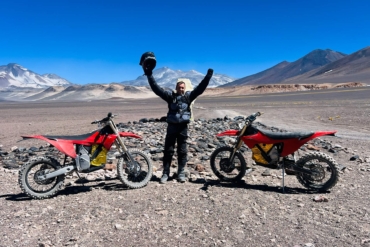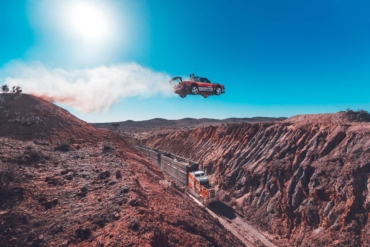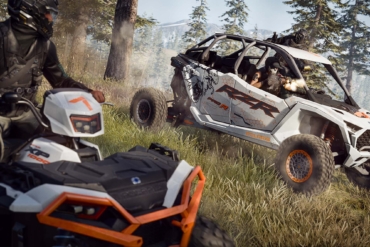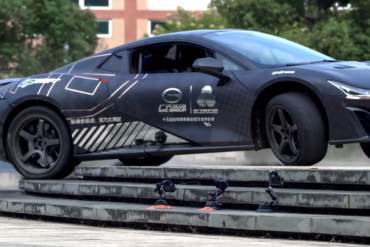The Pan-American Highway is often considered to be the greatest road trip on earth, spanning almost 19,000 miles from the top of North America all the way to the tip of Argentina. However, there are two roads that go to the top of the continent, and there is a bit of a debate in the overland community as to which road is the actual northern terminus of the Pan-Am.
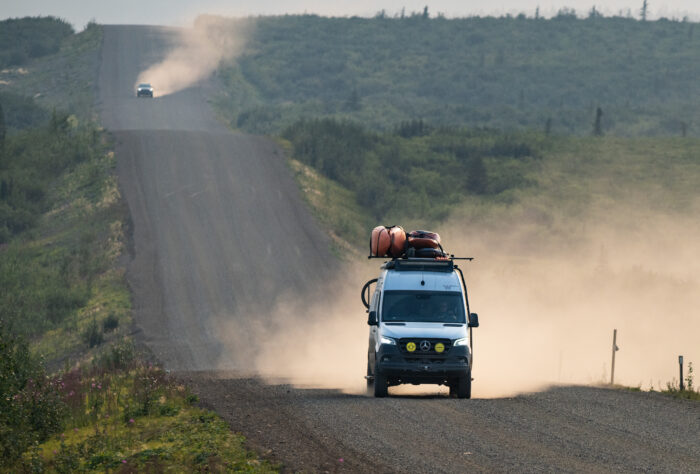
Some claim the Dempster Highway that leads to Tuktoyaktuk, Northwest Territories, Canada, to be the top of the Pan-Am. There is definitely a really nice aesthetic in this definition because the highway actually dead ends at the Arctic Ocean, and it feels like you have reached the end of the road.
By contrast, the Dalton Highway ends at a point approximately 65 miles further north, in Deadhorse, Alaska. But, it’s a bit anticlimactic in that there is a private road owned by an oil company that extends further north. Here, you have to book a tour and take a bus to get to the actual end of the road, versus driving your own vehicle there.
Neither route is paved and both extend approximately 500 miles into the remote arctic wilderness.
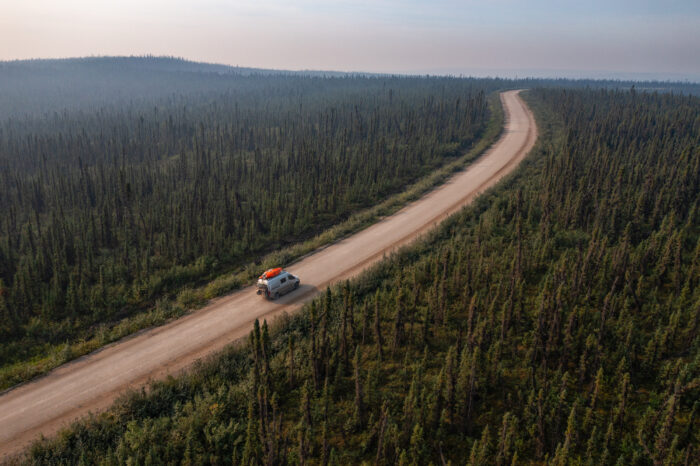
Just Do Both, We Thought
When we set our sights on driving the Pan-American Highway, we didn’t want there to be any ambiguity on whether or not we had actually reached the northern terminus of North America. So, we decided to tackle over 2,000 miles of rough dirt roads and visit both Tuktoyaktuk, Northwest Territories, and Deadhorse, Alaska.
The Dempster Highway
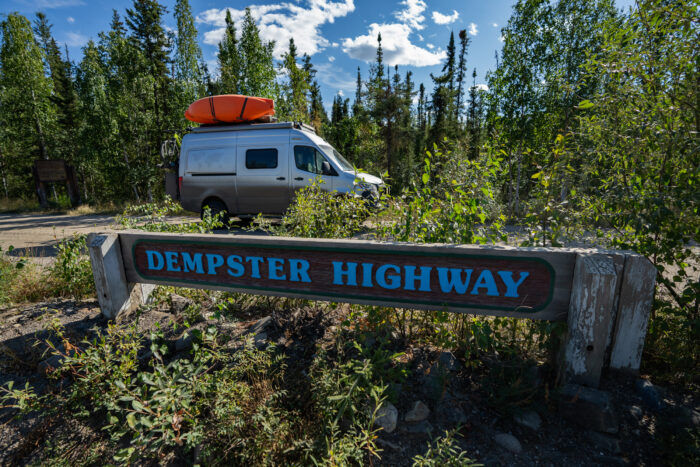
Our drive to Tuk began like a house afire. Actually, it was the woods all around us that were ablaze, often with flames lapping the shoulders of the road. Despite the alarmingly close proximity of the wildfires and the intense smoke, the drive was spectacular. We spotted caribou along the ridgelines and brown bears grazing in the blueberry patches.
Camping along the shores of the Arctic Ocean and swimming in its frigid waters seemed like the perfect kickoff to our 18-month Pan-American road trip.
And yet we still had another 1,000+ miles of rough dirt road to get to the other unofficial beginning in Deadhorse, Alaska. It was during this stretch that things began to take a definite turn for the worse.
First, a Goodbye to Tucker
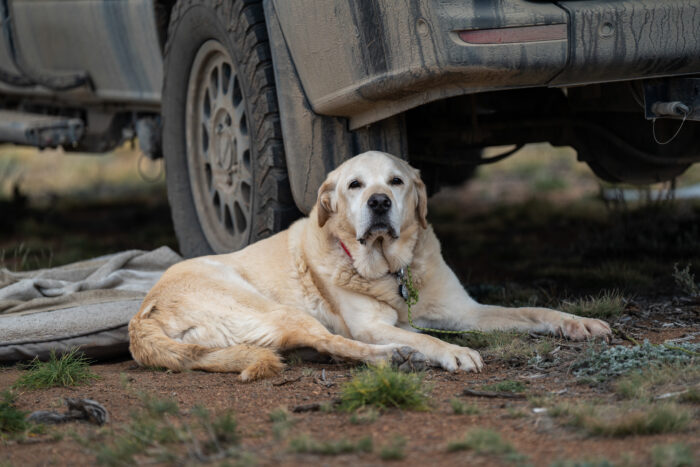
On the drive to Tuk, our sweet and faithful traveling companion, Tucker “The RV” Dog, became noticeably more frail and sickly. His 17 years of big adventures had taken their toll, and his suffering was more than he could bear.
We took him to the North Pole Veterinary Clinic, held his sweet head, and stroked his ears as his big brown eyes looked deeply into our souls as he drifted away. It was the hardest thing either of us had ever done.
We turned north out of Fairbanks and began our journey north on the Dalton Highway to Prudhoe Bay with a gaping hole in our hearts and an extreme wildfire warning threatening to close the road just over the horizon.
The Dalton Highway
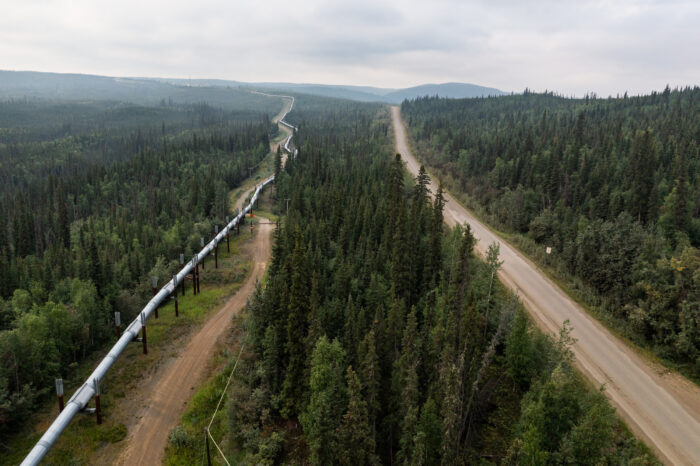
I would love to say that the excitement of approaching the official start of our Pan-American adventure was exhilarating, and the beautiful scenery along the Dalton Highway eased our grieving hearts, but in all honesty, the smoke was absolutely debilitating the first 300 miles of the drive north. Visibility was less than 50 feet, creating dangerous and intense driving conditions.
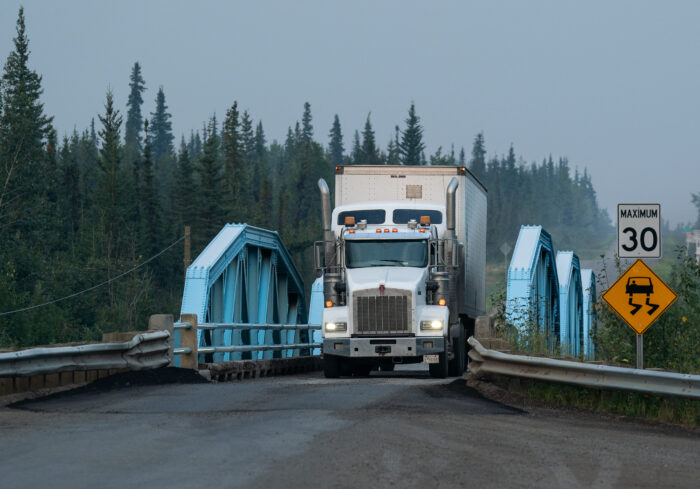
The smoke would conceal oncoming semi-trucks until they were almost on top of you, creating a lethal game of “dodge-truck” where everyone scrambles at the last second to avoid a head-on collision. And, while the road was partially paved, there were cavernous craters that regularly punctuated the surface that were difficult to see and took great concentration to avoid.
The prolonged smoke inhalation was taking its toll on us, and we were beginning to feel sick. I was the better of the two of us and took the wheel and forged ahead. Thankfully, as we ascended into the Brooks Mountain Range, the smoke dissipated. We were finally treated to some spectacular scenery.
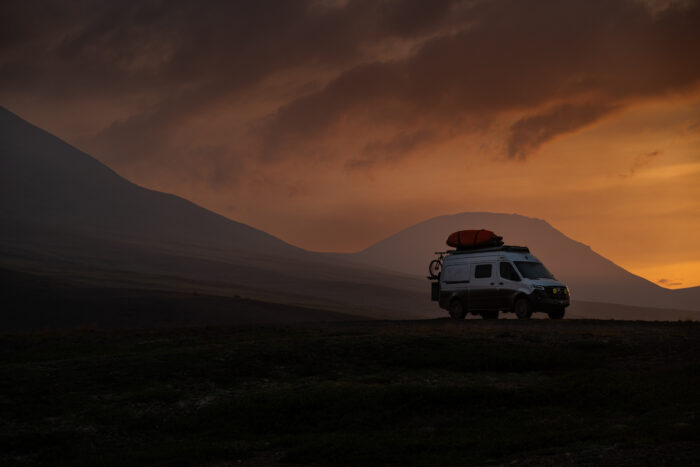
Deadhorse: The End of the Road
We spent the night just outside of Deadhorse, ready to put the difficulties of the preceding days behind us and eager to officially begin our Pan-American journey.
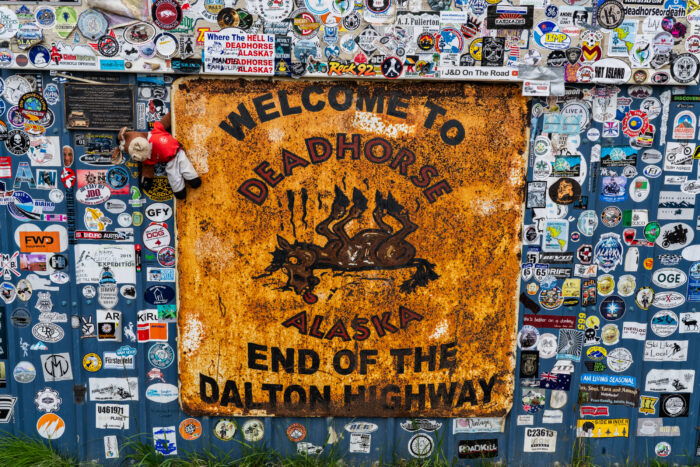
The next morning, we pulled into Deadhorse, excited to explore the area and book our bus tour to the Arctic Ocean. We made a loop around the small lake in town and stopped on the side of the road to take a quick picture.
When Peter shifted back into drive to continue onto the roadway, there was a catastrophic grinding noise coming from the rear of the van and no power.
We looked at each other with dread, knowing that our really bad, horrible, no-good last few days were about to get much, much worse.
The Prognosis
It is always a bit gut-wrenching when a vehicle breaks down, but our extremely remote location — 500 miles north of Fairbanks, the nearest town — amplified our difficulties exponentially. While Deadhorse is technically a small town, its sole purpose is to support the oil industry on the North Slope.
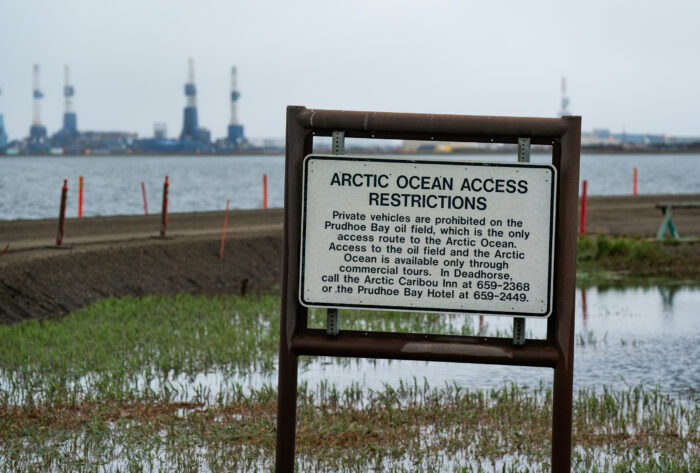
As such, lodging and dining are expensive and limited to work camps that provide room and board for the oilfield workers who cycle through in 2- to 4-week shifts. There are no grocery stores or restaurants (outside of the work camps), and all of the mechanics are focused on repairing large machinery, semi-trucks, and rental fleets.
After an agonizing morning spent on the phone, we quickly realized that while we were surrounded by mechanics and engineers, no one in town was able or willing to work on our Sprinter van. We called the roadside assistance hotline on our insurance card, who quickly informed us that they would happily tow our vehicle 10 miles at no charge, but to get us all the way to the nearest town with a real mechanic would cost us $6,000!
The Diagnosis
With little to lose, Peter crawled under the van to see if there was anything obvious that he could diagnose himself to get a better understanding of exactly what we were facing. Immediately, he saw that when we put the van in gear, the driveshaft was spinning, and the grinding noise was coming from inside the rear differential.
We called our friends, John at Agile Offroad and Paul at Mercedes Benz, for advice. Both agreed that our issue was probably one of three things: a broken axle, a broken connection between the drive shaft and the rear differential, or the entire differential itself. They both advised us to remove the cover on the driveshaft and take a look inside to help diagnose the issue.
We held our collective breath and removed the diff cover. While the gear oil was sludgy brown, there were no bits of metal in the fluid — a good sign. I turned the driveshaft by hand while Peter looked at the differential and immediately spotted the problem: one axle was spinning and the other wasn’t.
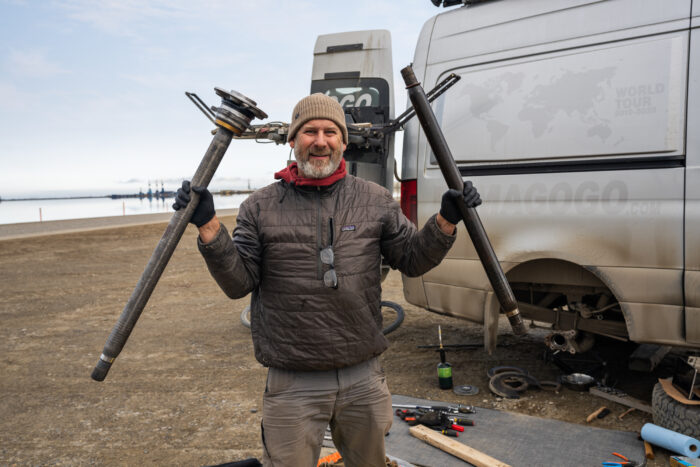
We had broken a rear axle on the passenger side of the van. While this sounds terrible, it is actually the easiest of the three scenarios to fix ourselves — in the mud on the side of the road.
YouTube & Wait
The next hurdle was how to get our hands on a new axle. Of course, it was Saturday, and nothing was open until Monday morning. Did I mention that Peter’s reaction to smoke inhalation had turned into a full-blown sinus infection?
While we were waiting, we decided to get our ducks in a row so that everything would flow as efficiently as possible on Monday. We watched YouTube videos about how to change an axle in a Sprinter van, and John and Paul both advised us on the tools and other supplies that we would need to complete the repair.
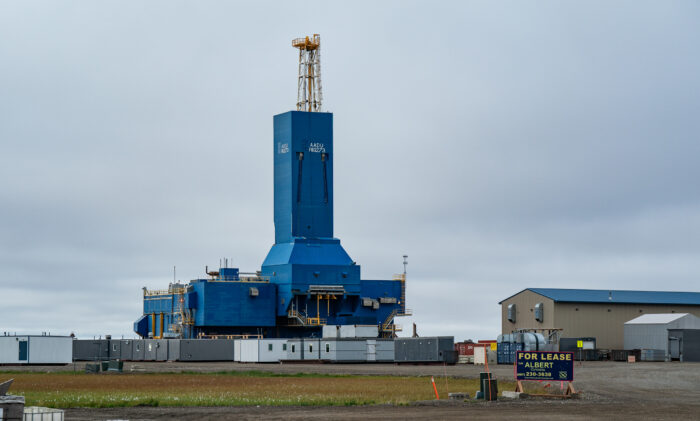
The Plight
Left with few options, Peter decided to tackle the massive repair himself in a muddy gravel lot in the arctic.
We discovered that while Deadhorse may not have a grocery store within 500 miles, they do have a well-stocked NAPA Auto Parts 2 miles from where we were stranded. That afternoon, we donned backpacks and headed out on a 4-mile hike to the NAPA to get all of the supplies that we would need to complete the repair. We trekked across town through gusty winds and freezing drizzle. Large vehicles zinged past us, pelting us with fine gravel.
As we approached the only store in town, a pick-up truck slowed next to us and asked what we were up to. We explained our situation, and the driver shook his head, perplexed why anyone would choose to drive all the way to Deadhorse for fun. Then he stared us dead in the eye and offered up a grave warning. He said there is a resident grizzly bear that roams through the town and was just spotted up the road.
He further explained that they let the bear wander around freely until it attacked or killed someone and that it was pure insanity to walk through town without bear spray and a firearm. We heard him drive away, muttering something about all the damn tourists.
We looked at each other, suddenly feeling very far from our van and quite naked without any protection against the grizzly. Our pace quickened considerably as we covered the last distance to the NAPA and made our way to the counter with our list of supplies.
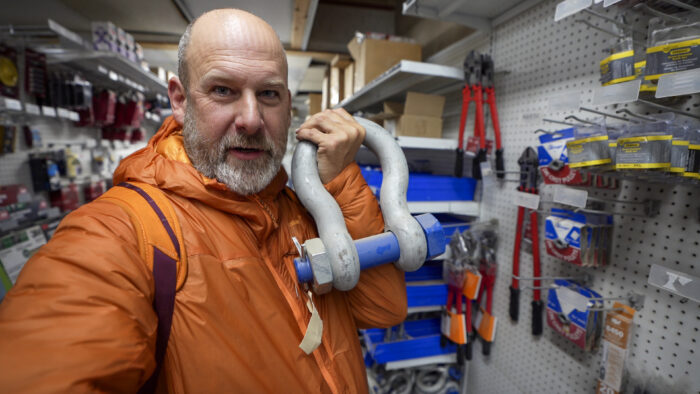
Auto Parts Store at the End of the Road
As we bellied up to the computer, the salesman said, “Oh, you must be the tourist, broken down across town, that we’ve heard so much about. We knew you weren’t from around here when you started walking down the road.” Apparently, word travels fast through the town of Deadhorse!
He quickly filled our order. An engineer who was picking up parts at the register next to us heard our plight, confirmed the danger of the resident grizzly, and offered a much-appreciated ride back to our van.
A Kind Soul & Electricity
When we returned to our Revel, there was a pick-up waiting for us. Another kind soul had heard about our troubles through the local gossip channels and was there to lend a hand. He towed us a short distance down the road to where there was a live bull bar where we could connect to electrical power as we sorted out our plans. Having power alleviated the need to conserve power while cooking, working, and using our Starlink for internet connectivity.
He also brought us an oil spill kit and some cardboard to lay over the muddy ground to give us a better working environment and to prevent any stray fluids from landing on the ground as we completed our repairs.
Self-Sufficient Van Life
We went to bed, hopeful that we might be able to sort this out ourselves and skip the costly tow to Fairbanks. But, as one problem was solved, others quickly emerged.
The next morning, we realized that our water tank was dwindling, and we had approximately 6 gallons remaining. While it wasn’t the worst-case scenario, we certainly needed to use it sparingly.
The toilet was more of a problem. Our 5-gallon cassette was already halfway full, and the closest bathroom facility was at the work camp that was three-quarters of a mile away.
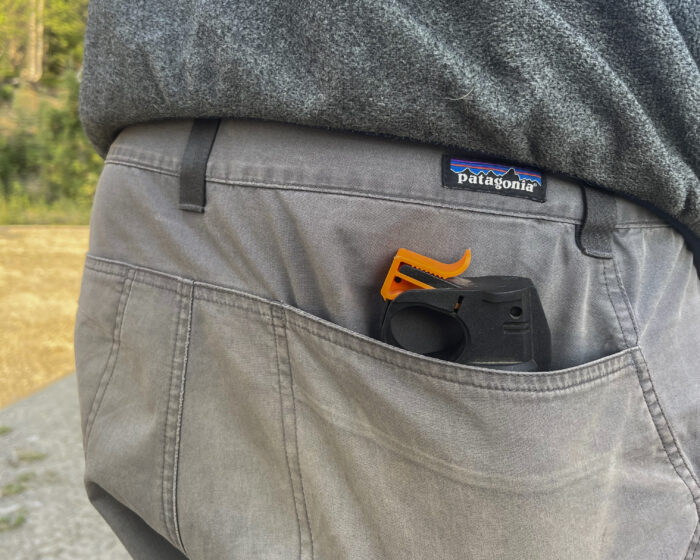
We still had several days’ of food in the pantry, but we were down to the things that we didn’t love, and even those wouldn’t last forever. We had no idea how long we were going to be stranded in Deadhorse, so we implemented some serious lifestyle rationing to make everything last as long as possible.
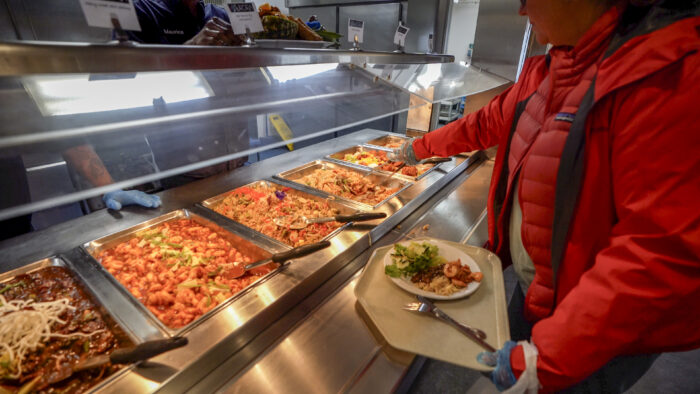
That night, we walked to the work camp for a Chinese dinner buffet, to use the bathroom facilities, and fill our water bottles. The dinner made Peter sick, and he writhed in pain all night long. No more meals at the work camp!
Monday, Monday, Monday
Finally, Monday morning arrived, and we were able to get in touch with Mercedes Benz of Anchorage to inquire about a new axle. They had the part in stock and would get it on an Air Alaska flight that night. Things were starting to look up!
“Be careful going in search of adventure — it’s ridiculously easy to find.” —William Least Heat-Moon
Bear Tracks & Axle Retrieval
On Tuesday morning, Peter rose early, feeling good for the first time in almost a week. His respiratory symptoms from the smoke were much improved. I, however, awoke with a temperature of 102 and a fierce cough. Perhaps it wasn’t the smoke that had caused Peter’s illness after all!
I remained in bed, and Peter offered to walk to the airport to pick up the new axle that had arrived via air freight early that morning. As Peter stepped out of the van to retrieve it, he was greeted with fresh grizzly tracks circling our van.
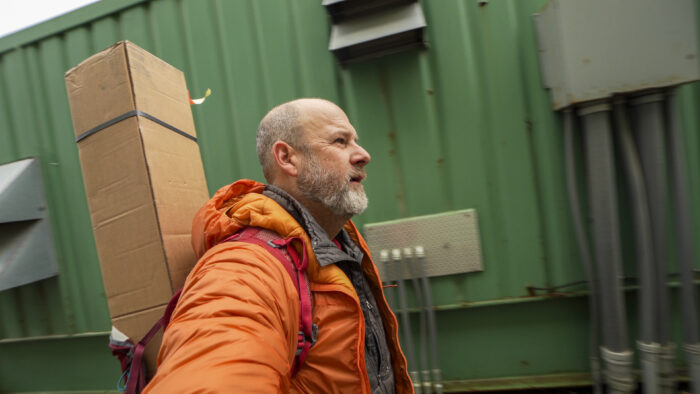
He grabbed a canister of bear spray and carefully made his way to the airport. The axle was ready and waiting. Now, all we had to do was replace it while avoiding getting killed by a bear!
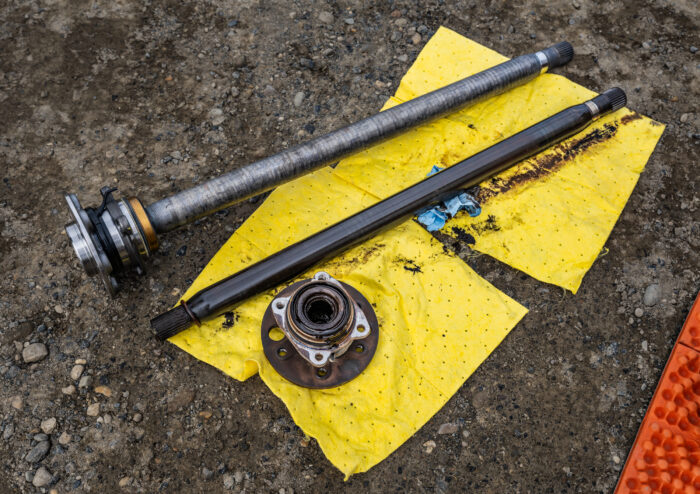
By the time he returned, I was half-alive and ready to help with the installation, or at least ready to serve as a lookout for the resident grizzly.
A Day of Wrenching at the End of the Road
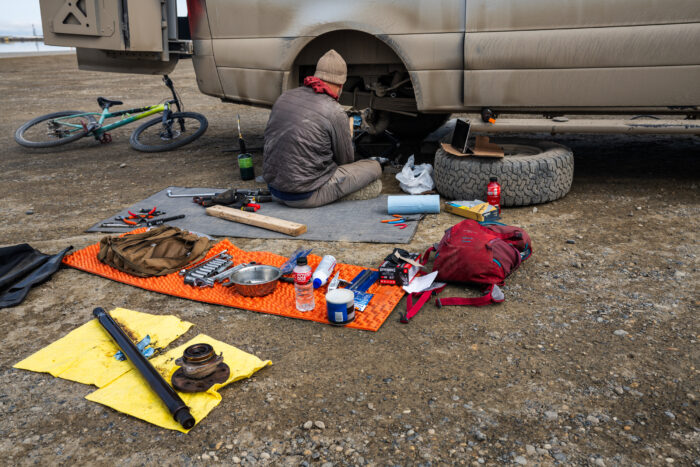
Peter wrenched and hammered on the back of our van for the majority of the day, sometimes swearing and sometimes hooting with glee. The hardest part of the entire operation was dismantling everything and removing the broken axle. Once he removed the broken pieces, everything went back together like clockwork.
After we were up and running, we drove to the official “end of the road.” We celebrated overcoming what once felt like an insurmountable hurdle and the true beginning of our Pan-American journey began.
We Arrived — Now Only 19,000 Miles to Go
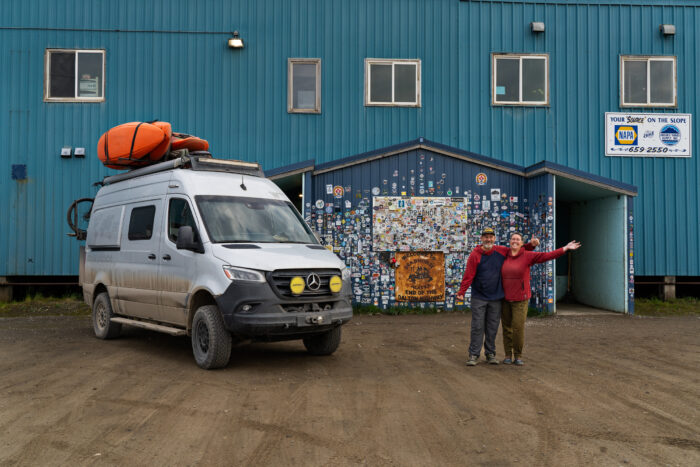
Looking back on our week spent in Deadhorse, it’s hard to believe everything that was thrown at us in such a short amount of time. Saying goodbye to our sweet Tucker dog, respiratory illness, limited resources, grizzly bears, and of course that we broke an axle and managed to replace it on the side of the road in a muddy gravel lot. It was certainly the hardest week we’ve ever experienced in 10 years of full-time travel.
Perhaps G.K. Chesterton said it best: “An adventure is only an inconvenience rightly considered.” We now have 19,000 miles that await us on the journey south. And many, many inconveniences that are sure to come. I hope that as we continue down the Pan-American Highway, we consider those inconveniences rightly and keep the spirit of adventure alive throughout our travels.
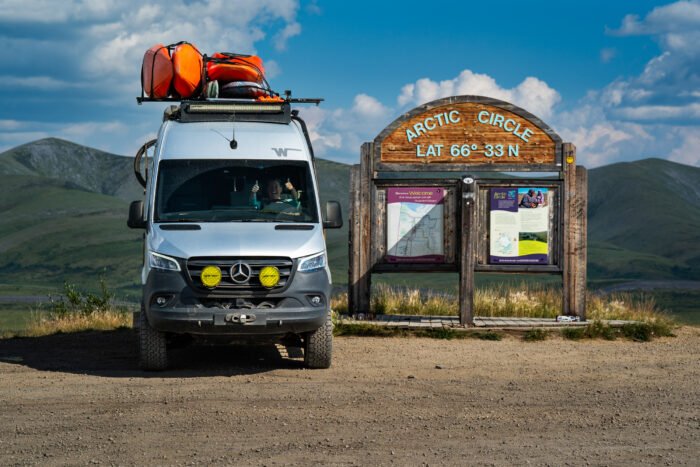
You can follow our adventures on Instagram @PeterHolcombe and through our weekly YouTube updates @PeterHolcombe. Onward!
